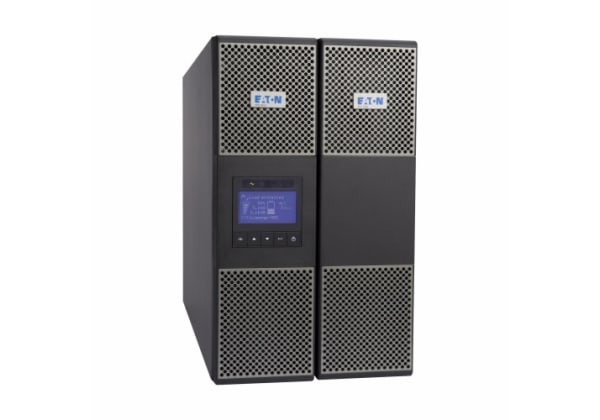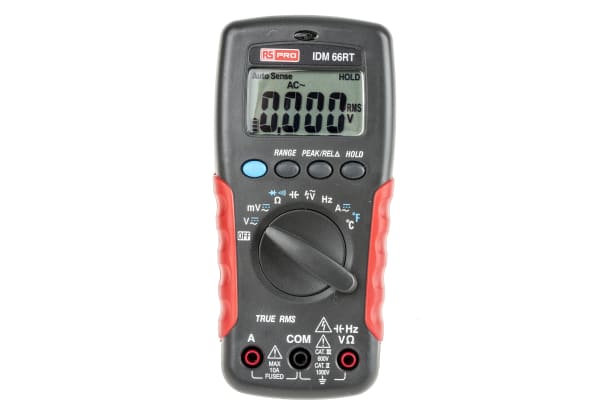- Published 14 Aug 2024
- Last Modified 14 Aug 2024
- 8 min
How Much Power Does a Computer Use?
From CPUs and GPUs to motherboards, RAM, and disk drives, computers use a lot of energy. This guide examines what affects the amount of energy your computer uses, looks at ways to determine computer power usage, and provides top tips on how to save energy.

Reviewed by Peter Kendall, Technical Interaction Engineer (July 2024)
Computer technology uses energy. How much depends on the type of computer and how long and often it is used for. A computer’s power draw can range from tens of watts for the latest energy-efficient laptop to hundreds of watts for large desktop gaming computers. Although computers are not as power-hungry as air conditioning units or production machinery, keeping tabs on how much energy they are using and looking at ways to reduce it are ways of making a business more sustainable.
This guide examines the factors that affect the amount of energy a computer uses, looks at ways to determine computer power usage, and provides advice on how to save energy when using a computer.
Electrical Power vs Energy
Before we go any further, let’s briefly discuss power versus energy. Addressing the questions of ‘How much electricity does a computer use?’ or ‘How much power does a computer use?’ should bear in mind the difference between energy and power.
Power is measured in watts or kilowatts (W or kW). Energy is measured in kilowatt hours (kWh). Simply, energy is capacity to do work; power is the rate at which work can be done. Power (watts) is applied over a period of time (hours), giving rise to a figure in watt-hours that shows how much energy has been consumed.
Kilowatt hours are commonly used to denote energy consumption when it comes to using electricity. And we can apply this unit when considering how much electricity a computer uses.
Factors Affecting Computer Energy Usage
There are numerous factors that affect the electricity usage of a computer. The types of hardware the computer contains, the memory it relies on, and the use of power management systems all affect typical computer power usage. Let’s take a look at some of the types of hardware and computer operation that consume most energy.
CPU
The central processing unit (CPU) typically represents a big chunk of a computer’s power requirements, from tens to hundreds of watts. The more work the CPU is doing, the more energy it consumes. A top-end Intel CPU might draw 150W. The CPU of course isn’t active all the time, but even when idle it consumes a significant amount of energy.
GPU
The graphics processing unit (GPU), which accelerates graphics and helps the computer process images, also slurps up electricity (perhaps as much as 1,000W for a very high-end graphics card). Calculations suggest that a popular high-end GPU from Nvidia consumes about 3,740 kWh of electricity annually. Scale that up by millions and millions of processors worldwide, and their total demand for energy is higher than many major US cities. This means reducing power draw while retaining speed and the ability to process huge volumes of graphical data is a priority for graphics card manufacturers.
RAM
RAM – random access memory – although not as much of a power drain as a GPU, does increase computer power usage. The more RAM, the higher the amount of energy required to run it. Each RAM module will use about 2 to 3.5W. Scale that up to 32GB of RAM (four modules), and you may have power requirements of almost 12W.
Storage
Storage media such as the hard disc drives in older computers and today’s more widely-used solid state drives also use plenty of power. There’s actually considerable debate over which type of drive – HDD or SSD – is more energy-efficient. But the fact that SSDs do not have moving parts is thought to contribute to their performance when it comes to the overall energy efficiency of a computer.
Computer Tasks Performed
The computational complexity of tasks performed by a PC influences how much energy it uses. For example, when the CPU clock speed goes up, the unit’s energy consumption also increases. Simpler tasks such as browsing the internet or word processing require less energy than streaming video or gaming. Very data-intensive tasks such as video editing require more energy still.
Place, Time of Day, Time of Year
Using energy in different places, at different times of the day, and in different periods of the year can affect the cost of running a computer and the sustainability of computing operations. In the UK, off-peak electricity tends to be sold between 11pm and 8am; you can cut bills doing data-intensive work in these periods. Electricity may also be cheaper in the spring and autumn compared to summer and winter. Renewable energy may vary in terms of the electricity mix in the summer and winter.
Options for Determining Your Energy Usage
There is a range of options available if you want to determine your computer power consumption.
Manually Calculate
It’s possible to manually work out how much power your computer uses. To do so, you need an estimate of the wattage of each of the key components in your computer: CPU, GPU, RAM, HDD/SSD, etc. First, add up the total wattage of the components. Then work out how many hours you use the computer or computers for each day. Multiply the wattage of the computer with the number of hours used to get a figure in watt-hours for computer energy consumption. Then divide the watt-hours by 1,000. The result is the daily energy usage of the device in kilowatt hours.
Measure Using Instruments
You may of course not know or be unable to estimate the wattage of individual components of your PC, which makes working desktop or laptop energy consumption problematic. That’s when using an instrument or software tool can help. For example, software is available that measures the power draw of the GPU and CPU by communicating with sensors on the motherboard.
But a more accurate way of measuring energy consumption of a computer is to use an energy metre. Plug your computer’s power supply into the energy metre, and the energy metre into the wall socket. This will give you an exact reading of how much electricity your machine consumes.
Energy-Saving Tips for Computer Work
There are lots of ways to save energy when you are using a computer. They include:
- Using power management. Today’s laptops and desktop PCs typically have tools for managing power consumption. These tools balance the need for performance with cutting energy usage. They can help ensure your device uses less energy at certain times and during certain tasks.
- Turning the screen brightness down. Screen brightness is often higher than is strictly necessary. A typical LCD monitor draws between 15 and 30W. This figure can readily be reduced by turning down the brightness setting of the screen.
- Shutting down unused programs or applications. We often leave applications running in the background even when we aren’t using them, but this can add to the energy demands of the computer. Remember to reduce overall energy consumption by exiting programs and apps you no longer need to use.
- Turning off Wi-Fi or Bluetooth when not in use. Wi-Fi and Bluetooth continuously emit signals when turned on, which requires energy. If you are in a situation where you don’t need access to the internet or connectivity to a Bluetooth-enabled device, turning Wi-Fi or Bluetooth off can help to cut computer power consumption.
- Disconnecting computer peripherals when not in use. All the devices and gadgets we attach to our computers require energy to run. Speakers, webcams, headphones and printers use energy in the background when connected. Disconnecting these devices can help lower the overall energy consumption of the PC.
Should You Shut Down or Sleep?
Some people erroneously believe that it takes more energy to power a computer back on than just to leave it resting. This may be the case if you’re away from your desk for a couple of minutes, but for longer periods of time, it pays to shut the computer down to save energy. Of course, you should also have sleep mode enabled to save energy while you’re working, too.
Selecting a Backup Power Supply
Almost as crucial as energy efficiency is ensuring your computer systems continue to operate in the event of an emergency power outage. You may want to consider specifying an uninterruptible power supply (UPS) to keep your systems running in the event of a power failure.
A UPS acts as a secondary power source for computers, servers, and your data centres. These lead acid or lithium-ion battery-powered devices are designed to provide enough leeway to perform a controlled shutdown of the hardware in question, preventing loss of data or damage to components. When considering purchasing a UPS, think about the type of circuit protection you need – whether it’s for blackouts, brownouts, surges, over-voltage, under-voltage, harmonic distortion, and so on – and the number of devices you want to protect, along with the cumulative wattage required to protect them.
It’s important to remember a UPS is an emergency backup, not a long-term way of working off-grid using a battery.
Do you need computer equipment and peripherals? RS has you covered here.


